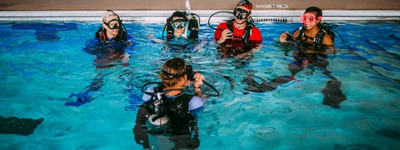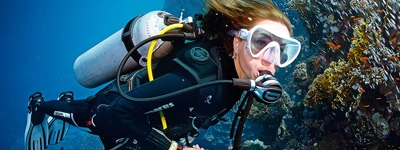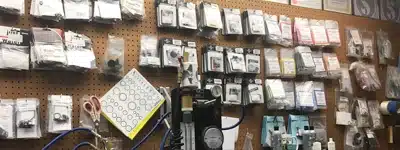
Coral reefs are among the most diverse and vital ecosystems on the planet, supporting approximately 25% of all marine species. These vibrant underwater habitats serve as essential nurseries for countless fish and marine organisms, providing food, shelter, and protection.
Beyond their ecological importance, coral reefs also offer critical coastal protection, acting as natural barriers that reduce the impact of storms, hurricanes, and coastal erosion.
In this article, we will explore the four primary types of coral reefs and highlight practical steps individuals can take to support their conservation, restoration, and long-term health.
The Four Main Types of Coral Reefs
Fringing Reefs
Fringing reefs grow directly along the shorelines of continents or islands, making them the most common and most accessible type of coral reef. Unlike barrier reefs, fringing reefs usually have no significant lagoon separating them from land—just a shallow reef flat between the beach and the reef edge.
These reefs often begin when tiny coral polyps settle on a hard underwater surface, like rock or sunken lava. These polyps—small carnivorous animals, not plants—kickstart the slow process of reef-building.
Because fringing reefs are so close to shore, they’re often the first to be explored by swimmers and snorkelers—but also the first to be damaged. Accidental kicks, sunscreen pollution, dropped gear, and even standing on coral can break or stress these fragile structures. That’s why reef-safe practices are so important when enjoying these natural wonders.

Example: Maui, Hawaii
Many of Hawaii’s coral reefs are fringing reefs. Near Lahaina, Maui, the reef is easily accessible for snorkelers and divers—an excellent chance to see these ecosystems up close.
Barrier Reefs
Barrier reefs are large, linear reef systems that run parallel to the shoreline, but unlike fringing reefs, they are separated from land by a broad, deep lagoon. These reefs often begin as fringing reefs and grow outward over time as the sea level rises or land subsides. The result is a vast underwater wall of coral that acts as a natural barrier—protecting coastlines from strong waves and storm surges.
They’re called “barrier” reefs for good reason—their sheer size and distance from shore create a dramatic underwater landscape. These reefs can span hundreds of miles and often support complex ecosystems teeming with life, from vibrant coral gardens to larger marine animals like sharks and sea turtles.
Did you know there’s a Great Barrier Reef in Belize? It’s part of the Mesoamerican Barrier Reef System, the second-largest reef system on Earth. This reef stretches over 650 miles.

Example: Great Barrier Reef, Australia
The world’s largest and most iconic reef system stretches over 1,400 miles (2,300 kilometers) and is about 20 million years old, with the current structure forming around 10 million years ago. Home to more than 1,500 species of fish, 400 types of coral, and countless marine mammals and invertebrates—it’s a true underwater metropolis.
Atolls
Atolls are ring-shaped coral reefs that form around the sinking remnants of volcanic islands. As the island gradually erodes and subsides, coral continues to grow upward, eventually leaving a central lagoon surrounded by reef. These unique structures are typically found in remote, open-ocean regions.
They’re especially common in Polynesia, where volcanic activity and warm, shallow waters create perfect conditions for reef-building. But don’t expect overnight results—island erosion and coral growth are incredibly slow processes, often taking thousands of years.
Bonus question: Is Belize’s Great Blue Hole an atoll?
Not quite—it’s a giant marine sinkhole located inside the Lighthouse Reef Atoll. So while the hole itself isn’t an atoll, it’s part of one!

Example: Bikini Atoll, Marshall Islands
Famous for its nuclear testing history, Bikini Atoll is a textbook example of this type of reef and is now a unique site for scuba divers.
Patch Reefs
Patch reefs are small, isolated coral formations found in lagoons or between larger reefs. They vary in size and shape—some resemble tiny underwater islands—and are often scattered between fringing and barrier reefs.
They may be small, but they’re teeming with life. Patch reefs often serve as nurseries for juvenile fish and provide shelter for a wide variety of marine creatures.

Example: Florida Keys National Marine Sanctuary
In places like Hawk Channel, you’ll find plenty of patch reefs dotting the shallow waters between the Florida Keys and the outer reef tract.
How Can We Protect Coral Reefs?
Coral reefs are fragile, and their survival depends heavily on our actions. Scientists estimate that up to 80% of the Earth’s oxygen is produced by oceanic organisms—mainly phytoplankton, algae, and coral reef ecosystems (NOAA). That means protecting coral reefs isn’t just about saving beautiful underwater structures—it’s about protecting the very air we breathe.
Here are some simple but powerful ways you can help:
- Prevent Pollution: Whether you’re on a dive or just walking around your neighborhood—pick up trash. Every piece counts. Fun fact: it takes as much energy to create one new aluminum can as it does to recycle 20 used ones. Wild, right?
- Be Gentle in the Water: Please—don’t touch, kick, or walk on coral. Yes, some corals can regenerate through fragmentation, but this isn’t the norm. Both hard and soft corals are delicate. Don’t fan them, don’t test their strength. Just observe and respect.
- Be Aware of Chemical Runoff: Chemicals like fertilizer cause algae blooms, which block sunlight and smother coral. Deforestation leads to erosion and soil runoff that can bury coral and kill the algae they rely on. These algae—called zooxanthellae—live in coral and provide nutrients through photosynthesis. No sunlight = no photosynthesis = coral bleaching.
- Understand Ocean Acidification: This is caused by excess carbon dioxide dissolving in the ocean, lowering the pH. Acidic water can weaken mollusk shells and harm coral growth. This process may be natural and cyclical, but we’ve likely sped it up through industrial activity. Either way, awareness is the first step toward action.

The more we understand our oceans, the more empowered we are to protect them. So don’t stop here. Keep exploring, keep learning, and support organizations and research dedicated to ocean conservation. Whether you’re diving in or reading up, every step you take helps safeguard the reefs—and the planet—for generations to come.















